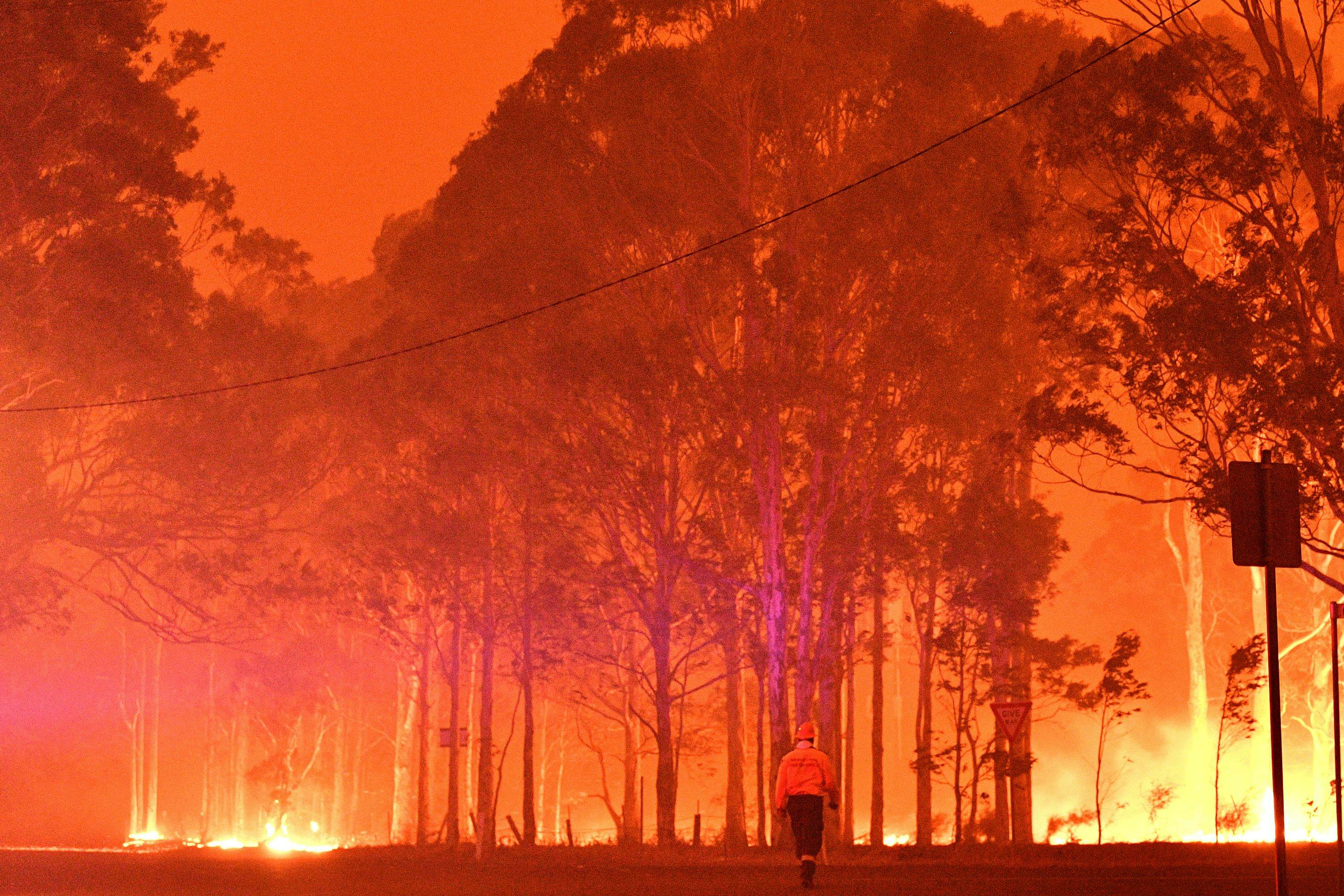Professional Guidance on Bushfire Monitoring for Improved Fire Protection
In the realm of bushfire administration, the importance of expert recommendations can not be overemphasized. From recognizing the nuances of bushfire habits to carrying out sensible steps such as firebreaks and defensible rooms, there exists a wide range of knowledge that can dramatically enhance fire defense efforts.
Comprehending Bushfire Behavior
To efficiently handle and mitigate the effect of bushfires, it is necessary to have an extensive understanding of bushfire habits. Bushfires are intricate natural phenomena influenced by numerous aspects such as weather, topography, fuel load, and human tasks. Recognizing exactly how these aspects communicate is important in anticipating the behavior of a bushfire, enabling far better preparation and reaction techniques.
One key facet of bushfire habits is fire spread. By examining past fire cases and examining fire patterns, experts can prepare for exactly how a bushfire could advance under specific problems.
Moreover, understanding ember assault, detecting, and fire whirls is crucial in comprehending the complete extent of bushfire actions. Embers can take a trip fars away in advance of the fire front, firing up place fires and posing a substantial risk to residential properties. Fire whirls, on the various other hand, can develop irregular fire behavior, making the fire monitoring process much more challenging. By diving into these intricacies of bushfire habits, authorities can enhance their readiness and response capacities, ultimately lowering the effect of these damaging occasions.
Executing Firebreaks and Defensible Rooms
Comprehending bushfire behavior is foundational for properly carrying out firebreaks and creating defensible rooms to boost fire security. Keeping these firebreaks through normal cleaning of debris and plant life is necessary to ensure their performance throughout a bushfire event.

Correctly carrying out firebreaks and defensible rooms needs careful preparation, normal upkeep, and neighborhood cooperation to ensure the highest level of fire security for buildings and lives in bushfire-prone locations.
Utilizing Early Caution Equipments
Releasing advanced very early warning systems is important for prompt discovery and notifying of potential bushfire hazards. By using sophisticated technologies such as satellite surveillance, weather condition sensors, and thermal imaging, authorities can properly find and keep an eye on fire-prone areas ignition resources at the earliest phases. These systems can supply real-time data ablaze direction, behavior, and strength, enabling punctual decision-making and quick release of firefighting sources to the affected areas.
Early caution systems additionally play a critical role in alerting residents and communities concerning impending bushfire risks. Via automated alarms, text notifies, telephone call, and social networks alerts, people can be rapidly educated about emptying orders, risk-free sanctuary locations, and emergency treatments. This proactive method not just conserves lives but likewise minimizes home damage by ensuring that people have sufficient time to leave and protect their homes.
Developing Emptying Strategies
Reliable evacuation plans are necessary for making sure the safety of homeowners in bushfire-prone areas. Developing well-balanced emptying strategies is important in alleviating the risks positioned by bushfires and guarding human life. These strategies need to be thorough, taking into consideration numerous variables such as the topography of the location, the thickness of plants, and the likely speed and instructions of the fire's spread.
When developing emptying strategies, it is very important to establish clear evacuation courses and setting up factors find out this here where locals can gather securely. These routes should be frequently maintained to make certain access during emergency situations. In addition, communication strategies have to remain in place to sharp citizens of imminent threat and supply clear instructions on discharge procedures.
Collaboration in between neighborhood authorities, emergency services, and area participants is necessary in establishing effective discharge strategies. Routine drills and exercises should be performed to familiarize homeowners with the procedures and guarantee a swift and organized evacuation when a bushfire threatens the area. By focusing on the advancement of robust evacuation strategies, areas can enhance their durability to bushfire emergencies and decrease the possible effect on lives and residential or commercial properties

Participating In Area Preparedness
In the realm of bushfire monitoring, promoting neighborhood preparedness plays a crucial duty in strengthening the durability of locals living in risky areas. Engaging in community readiness entails enlightening homeowners on bushfire threats, advertising fire safety and security methods, and establishing emergency strategies jointly. By actively involving the community in readiness initiatives, individuals end up being more informed and encouraged to take positive procedures to guard their lives and residential or commercial properties during bushfire incidents.
Community preparedness initiatives usually consist of carrying out fire drills, establishing interaction networks, and arranging training sessions on fire suppression techniques. Moreover, urging partnership amongst next-door neighbors to develop a cohesive support group can significantly enhance the general readiness level of a community. The possibility of lessening damages and ensuring safety boosts considerably. when homeowners are knowledgeable and equipped to respond properly YOURURL.com to bushfires.
Verdict
To conclude, reliable bushfire Source management needs a comprehensive understanding of fire habits, the implementation of firebreaks and defensible areas, the usage of very early caution systems, the growth of discharge strategies, and neighborhood involvement in readiness efforts. By integrating these methods, communities can boost their fire defense procedures and minimize the effect of bushfires on both property and lives. BAL Report. It is important for all stakeholders to work together to develop a much safer atmosphere when faced with this all-natural disaster
To effectively manage and mitigate the influence of bushfires, it is crucial to have a thorough understanding of bushfire behavior. By examining past fire events and assessing fire patterns, specialists can expect just how a bushfire may advance under specific problems.Recognizing bushfire habits is fundamental for properly applying firebreaks and producing defensible spaces to enhance fire security. Engaging in area readiness includes informing citizens on bushfire dangers, promoting fire safety practices, and developing emergency plans collectively.In conclusion, efficient bushfire administration needs a detailed understanding of fire habits, the application of firebreaks and defensible spaces, the utilization of very early caution systems, the development of evacuation strategies, and neighborhood involvement in readiness efforts.